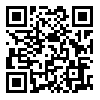Volume 19, Issue 4 (JIAEEE Vol.19 No.4 2022)
Journal of Iranian Association of Electrical and Electronics Engineers 2022, 19(4): 81-91 |
Back to browse issues page
Download citation:
BibTeX | RIS | EndNote | Medlars | ProCite | Reference Manager | RefWorks
Send citation to:



BibTeX | RIS | EndNote | Medlars | ProCite | Reference Manager | RefWorks
Send citation to:
Abdollahi R, Abdolhosseini M. A Novel 36-pulse rectifier with low kVA rate to reduce harmonic input current distortion. Journal of Iranian Association of Electrical and Electronics Engineers 2022; 19 (4) :81-91
URL: http://jiaeee.com/article-1-1201-en.html
URL: http://jiaeee.com/article-1-1201-en.html
Department of Electrical Engineering,Technical and Vocational University (TVU), Tehran
Abstract: (2400 Views)
The increase in the number of pulses in multipulse rectifiers leads to a reduction in harmonic current distortion. But this increase in the number of pulses leads to an increase in kVA, cost, and complexity of the multi-pulse rectifiers. As a result, in industrial applications, 12-pulse rectifiers are mainly used due to their lightweight, simple transformers, and low kVA rate, and low cost. The 12-pulse rectifiers cannot meet the standard limitations of IEEE Std. 519 means that the harmonic distortion of the input current is less than 5%, so they are usually used with the filter. In recent years, in order to increase the number of pulses and reduce the harmonic distortion of the input current without increasing cost and complexity in the 12-pulse rectifier, passive harmonic mitigation in the DC link has been introduced. In this paper, a pulse tripling circuit is proposed to upgrade the structure of a 12-pulse rectifier to 36 pulses with a very small kVA rate (kV equivalent to 1.34% of the rated load). Also, the 12-phase autotransformer used in the proposed structure is based on a polygon connection with a very low kVA rate compared to other autotransformer structures. As a result, the total kV rate of the proposed 36-pulse rectifier is about 24% kV of nominal load. Simulation results show that the harmonic distortion of the total input current in the proposed rectifier is less than 3%.
Type of Article: Research |
Subject:
Power
Received: 2020/10/13 | Accepted: 2021/07/12 | Published: 2022/10/28
Received: 2020/10/13 | Accepted: 2021/07/12 | Published: 2022/10/28
Send email to the article author
| Rights and permissions | |
 |
This Journal is an open access Journal Licensed under the Creative Commons Attribution-NonCommercial 4.0 International License. (CC BY NC 4.0) |







